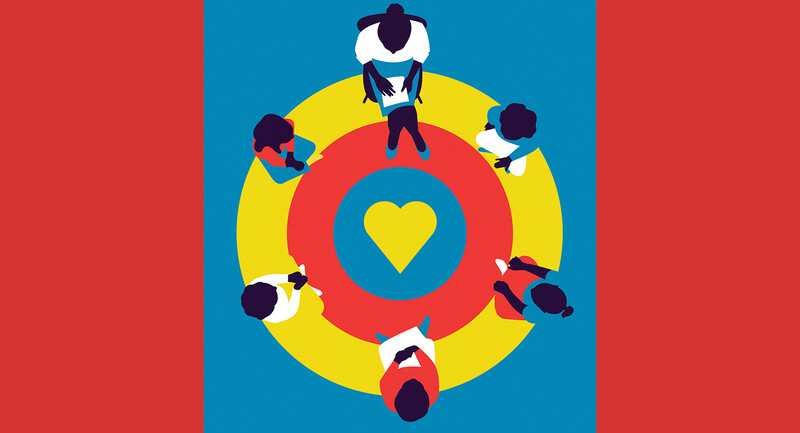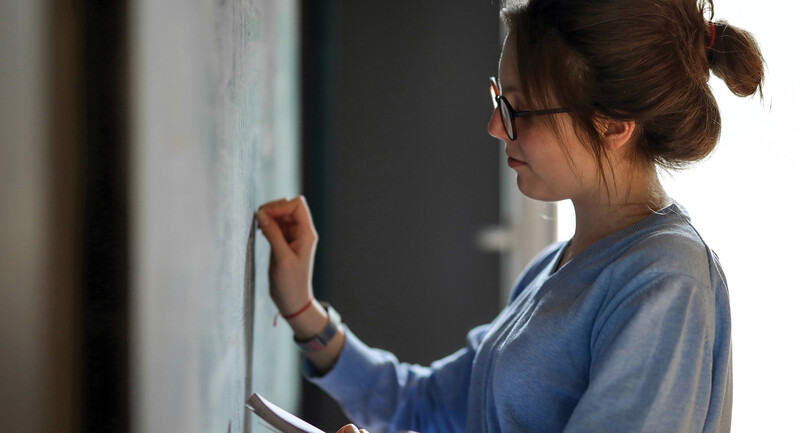There's a moment in the musical The Fantastiks that always makes me laugh—and think about the nature of schooling as it relates to the basic drives of growing up. The young female lead sings about who she wants to be, or perhaps more aptly, how she wants to be, as she ponders adulthood. She dreams aloud about the shape her future will take—bold, beautiful, remarkable, irreproducible. But in a moment of doubt, she becomes still, reflective, and terrified. She whispers a prayer: "Please, God, don't let me be normal!"
I saw that musical every year for nearly two decades when I took 8th graders to New York City for a long weekend. I saw my adolescent students reflected on the stage—caught in a quest to believe that they would make a positive difference in the world and that they would stand out in some noteworthy way.
At 13 years old, many of these students were pulled simultaneously between two poles of need. On one hand, like the young woman in the production, they wanted—needed—to be unique. They searched, sometimes awkwardly and sometimes fiercely, for the hallmarks of promise in themselves. Was it math, humor, kindness, faith, leadership, or athletic skill? They were in the uncertain business of dream building—of casting themselves in a future still largely unknown. I can't recall a student of any age whose dream was to be an indistinguishable face in the crowd. In actions and words, my students reflected the plea of the young woman on stage.
These same students were pulled in a second direction—a draw that tugged at them just as powerfully. They yearned to belong. Even as they crafted visions of what would set them apart, they engaged tenaciously in pursuits that would make them like their peers—things that would make them "normal." They tended to adopt the same slang, listen to the same songs, wear the same outfits, and take part in the same dramas as their peers. At those moments, and there were many of them, being normal mattered even more that being a person unto themselves.
Working in Concert
As educators focus on structures, processes, and plans aimed at ensuring that students master fundamental content, students simultaneously attend to the more basic drive to make a mark in their world while securing their place with the group. Making friends, having friends, and being a friend is nearly always more compelling than homework.
It's not that teachers, building administrators, and district leaders are misguided in their desire to prepare students for the world ahead. But the educator's drive for academic prowess can't exist apart from the students' drive to carve out their own paths and still belong. It would be a worthy use of time for educators to look often at where our pursuit of academics works in concert with students' pursuit of contribution and community, and where our approaches are at odds with those strivings of young people.
How often do we share with students the strengths and possibilities we see in them? On what occasions do we focus on student deficits rather than assets? How frequently do we send messages, even unintended ones, that only some students are smart? What is the cost of policies and practices that indicate to the majority of students that they aren't part of the group for which we hold the most hope? What is the cost of coming to see students as test scores and celebrating a rise in those scores above all else in a school?
Putting Positives First
So what does teaching look like when it ensures that every student belongs and contributes in meaningful ways? There's no recipe, of course—but in every school, we have models. Here are a few teachers who have taught me the power of putting positives first.
Annie McKenzie told her middle schoolers that their individuality would drive creativity and accomplishment in her class. She spent the rest of the year helping students figure out how their particular strengths would lift them individually and as a group. Each student's uniqueness was a ticket to belonging.
Steven Levy used songs, movement, poetry, and art to open pathways for each of his 4th graders to experience success with a curriculum that was at once highly complex and highly relevant.
In his classroom today, Chad Prather uses popular culture, metaphors, and music as gateways through which his high school students can relate to history. He teaches less content than most teachers, but teaches it far more deeply so that students come to "own" history rather than "borrow" it.
Kim Graves says to her high school students, "What do you care about? Let's start there."
In these classrooms and many others like them, the teachers have learned that strengths reside in every student. Success emanates from finding and cultivating those strengths, and students belong when their possibilities are evident to and affirmed by their peers. That seems right. In most cases, academic success is almost surely interwoven with a learner's drive to be unique and to belong.








